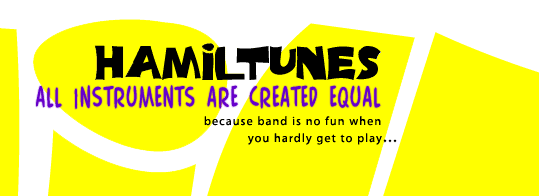
|
ok, here’s the deal: this comes from not having enough days to rehearse and not enough minutes in those days…sight reading something easy, only to have to stop and teach the trumpets and flutes the melody while all those low brass players you spent so much time recruiting are sitting doing nothing…we won’t even start with what the percussionists are doing…They should all be.playing. Sing the following excerpts to yourself, and imagine introducing each idea to your band in unison. (I don’t know about you, but I am always disappointed in the quality and hassle of downloading and listening to sound files at this point in the web site…)You can teach style, articulation, phrasing, intonation…everything to everyone at the same time. Your percussionists can play these parts on mallets or groove on the four instrument untuned.part. |
 |
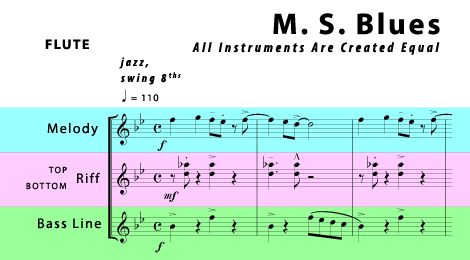 |
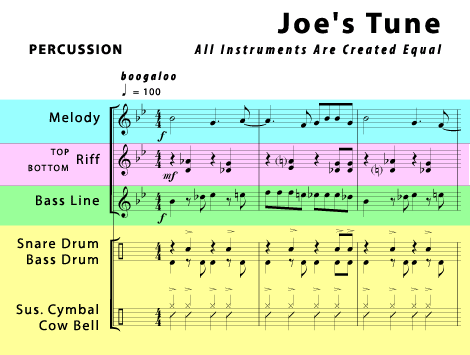 |
| …soon duos and trios will happen spontaneously and you can begin dividing up the parts around the room. At another rehearsal you can pass out the Performance Arrangement. This is the traditional assigning of parts and also includes an introduction, coda and optional improvisation.section. |
 |
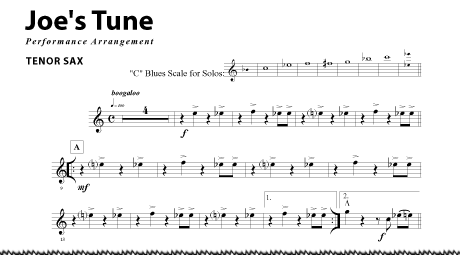 |
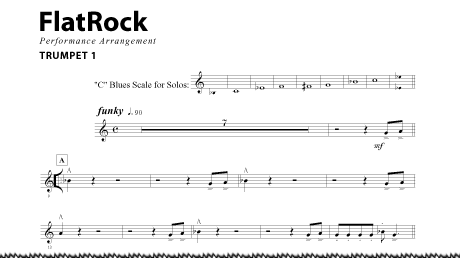 |
|
The three pieces above contain a section where each member of your band can perform an improvisation. It will be an intense thrill for both you and your students when they succeed in this venture…and the parents?…it will definitely be their favorite part of the program, as little Janey finally gets to show her.stuff! Have you never taught improvisation before? Are you not sure how to begin? You are not alone! There are many excellent methods available for teaching improvisation to children and a quick search of the web will show you many sites. Preparing your students individually with intensive theory, ear training, and listening is of course ideal. We know however, that this is impractical if not impossible due to the limited time we have with our concert bands and jazz ensembles. With these three arrangements you have the opportunity to teach beginner improvisation to your whole ensemble at.once. |
|
The suggestions below are in each conductor’s score, which also includes extra details relevant to the particular chart and example musical phrases. (WARNING— the following suggestions assume the instructor is actually able to play a musical.instrument)
|
| Please download samples of these arrangements: You’ll need Adobe Acrobat Reader to view these files. This is an excellent free utility for opening and printing PDF files regardless of the computer or platform you use…and it’s easy to download from Adobe if you don’t already have.it. |
| Please check back to this page. We have many more arrangements on the way including classics everybody loves such as: I Feel Good, Hound Dog, Louie, Louie, and.more… |
| home..|..who are we?..|..order/contact info.. |
| All.Instruments.Are.Created.Equal..|..Klezmer Series for Band..|..Cool Stuff to do with Your Band |
|
Copyright © 2001 by |